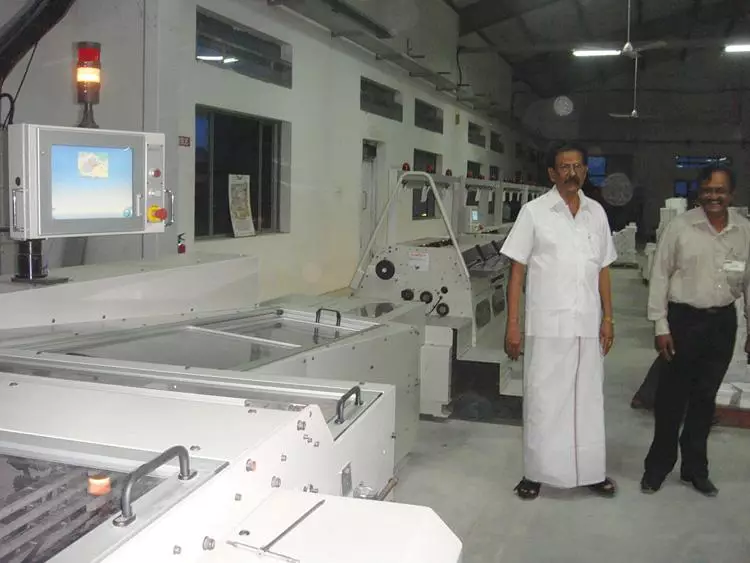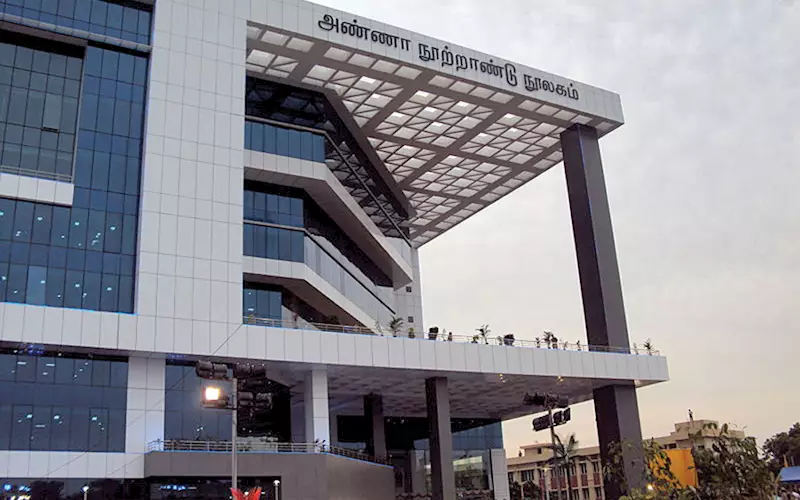India: Book laboratory of the world
The Indian print industry is clocking $21 billion in 2011, a growth of 73%. This along with $8 billion per annum budgetary support for education will boost the book market, says Ramu Ramanathan
18 Jul 2012 | By Ramu Ramanathan
On 16 September, Chennai inaugurated the Anna Centenary Library (ACL), a magnificent eight-storey structure said to be South Asia’s largest and most elegantly designed state-of-the-art ibrary. The ACL will stock 1.20 million books in all major languages of the world, besides providing access to 0.2 million e-books and 20,000 e-journals.
The $40 million which has been spent on ACL is unusual by Indian standards. Unusual, because the Indian government is unhelpful about books. Aroon Tikekar, who is president of the Asiatic Society of Mumbai and was former editor of Loksatta says: “There was a directive that there cannot be a tax on knowledge. But the municipal corporation in Maharashtra (one of the most progressive states in India) levied octroi on books. After some protest, this was revived to no tax on essential books.” This created confusion about what was an essential book.
Having said that Tikekar is still hopeful. One reason is, he inaugurated a new initiative recently. Book Ganga is an online website for Indian literature. It boasts of having the largest repository of Marathi books. And attempts to give Marathi authors a “sexier” look.
All about books
The book demand is being propelled by India’s — 8.8% growth in 2010 — and the reading habits of the burgeoning Indian middle class.
Publishers have begun to forecast that India will be the biggest English language book-buying market in the world. Today, it is the third largest after USA and UK; but ahead of major Asian competitors such as China and Japan.
The downside is, more than seven million children in India drop out from schools. And all they need is a book.
For that to happen, these books have to be created. In India, the government has made a commitment of $7.56 billion every year for a period of five years and has set aside $3.33 billion for 2010-11. This should improve the quality and availability of schoolbooks in this country.
Today, the demand drivers for education are based on the fact that it’s a young nation which has a population of 400 million between the ages of 5 to 24. Of this, 220 million attend schools and colleges. And at the present birth rate of 22 million/annum, complemented with better enrollments in primary schools; it will lead to a double digit growth.
Hundreds of publishers publish regional books authored by local authors. The Indian school market continues to be highly price sensitive, with the price range of textbooks being Rs 40 to Rs 80.
Sunil Gala, the director for finance at Navneet Publications says: “In the subsequent years, we will see many schools following these numbers and therefore we might have much more larger audience or the student community using our e-learning products in the classroom.”

Growth in books
Jaya Bhattacharji Rose, publishing consultant, agrees: “The focus is shifting from typesetting and low-end work to high-quality books like medical journals, dictionaries, hardcover coffee table books and even magazines for circulation in the United States. Exports have been partly fuelled by duty drawbacks as printers bid for orders from international publishers in newer, non-traditional markets.”
Interestingly, in the past few years, literary agents have increased the number of their authors from 10 to 50. One can also see the growth of translation agencies in India. And interesting models of collaborations between small and big publishers – like Mapin and Harper Collins, as well as Zubaan and Penguin. This means, a few titles by the smaller publisher are promoted and distributed by the larger one.
Print: The game changers

A journey with books

Book production: The Indian way
The planning team at OBL felt they should pay a bit more attention during the procurement stage of materials – and focus on text and cover paper especially related to grain direction. They discussed the unrealistic pressures on production since very short time is available between planning to delivery.
Cost and quality
According to a sample survey conducted by Welbound there are 1.3 billion books which are perfect bound in India. There are approximately 1,800 printer-binder-publishers that produce these books and consume 3,250 MT of hotmelt adhesives.
Today, the Indian paper industry is poised to grow at 8% a year. This means, it will consume 11.5 million tonnes of paper in 2011-12 from 9.18 million tonnes in 2009-10. This is because per capita paper consumption has increased to 9.18 kilograms in 2009-10 as compared to 8.3 kilograms during 2008-09. These numbers are expected to improve with enhanced book production.
One reason is: the Indian book printer has become much more competitive due to improvements (howsoever slow they may be) at ports, roads and railways and communication facilities. Plus most of them are importing new and second hand kit that permits technology upgradation.
Replika Press at Kundli (near Delhi) is a good instance of a book printer who produces 75,000 hard-case and 150 thousand soft-case books per day. The company has procured another five acre land to spruce its export-base (direct and indirect) which constitutes 70% of its turnover.
Digital applications
Obviously books on demand are nothing new, companies have been offering digitally produced books for a number of years – but with even the most traditional of book printers in India, such as Repro India (Mumbai / Surat) and Palaniappa (Chennai), installing digital book production lines, it’s clear that the technology now matches the demands of the market.
Both groups are deploying digital to produce on-demand highly personalised books (500-1000 copies).
Leonard Fernandes who oversees operations at Dogearsetc, an online book store and a print-on-demand (POD) service, says: “Of our many clients, there are a few publishers. They use POD to “test the market” in different countries. They simply ship a few copies there, mostly at book fairs, and gauge the response to their titles. POD allows them to test the waters without investing too much.”
He adds: “POD allows publishers to keep their back lists in circulation without a large print run. We have done this for a publisher in Canada. We print one copy at a time when the book is ordered and ship it to the customer. That way there are no unsold copies lying around, yet the book is always available.”
Recently, Ricoh Infoprint (a digital print manufacturer) did a sample-survey in the Delhi region. They invited quotations from offset and digital print firms for both colour and monochrome printing on the basis of fixed specifications. These quotations were then averaged and analysed.
The results revealed: printing full colour books of 75 copies or less is more economical using digital presses than going the conventional offset route. However, in the case of monochrome book printing, offset printing is more economical for any quantity from 50 books up till 500 books. Of course this would hold true for higher quantities as well. The basic point seems to be that offset printers in India are extremely competitive and willing to print much shorter runs than in other markets.
BPO publishing
Today, global publishers and service providers are outsourcing their printing and publishing services to printers like Vakils & Sons in India.
Talking about a printing and publishing BPO, Bimal Mehta, the executive director at the company, says: “Estimates put the Indian publishing BPO at $400 million with 30% annual growth. Worldwide, the industry is valued at $2.5 billion and is expected to double in India by 2009. Volume of work which is headed towards India is expected to touch approximately $1.1 billion by 2011.”
Vakils has a fleet of computers which services international clients. It ranges from financial institutions, publishers and Japanese comic book publishers.
With the dawn of new business ventures and entrepreneurial challenges, the requirement of data conversion has attained its peak. It is not an unfamiliar term in today’s business scenario.
What Ganesan is saying is, that content-intensive organisations can provide the right information, to the right people, at the right time, in the right format and language—and on the right device, be it an iPhone, Kindle, PC, Mac, Blackberry, Android or Nokia—without making readers jump through a series of technological hoops to get to the content they desire.
This is thanks to XML technology which establishes a workflow for the simultaneous delivery of content through multiple channels (print, online and multiple mobile devices) is a simple process.
Increasingly, European publishers (and print firms) are scouring India to find a pool of suppliers that not only meet price and quality demands, but also subscribe to the group’s own publishing aspirations. This could include: green initiatives, to Forest Stewardship Council-certified paper to ISO 14001 accreditation.
Clearly, the Indian book market is questioning the established approaches and definitions that traditional publishers have relied on for decades. At the same time, it is changing the way we think of publishing.
Today, with digital content, almost everyone is a publisher. That’s why it is difficult to predict in which direction the market will unfold. But what is evident is, India is a key contender to profit from the opportunities.











 See All
See All